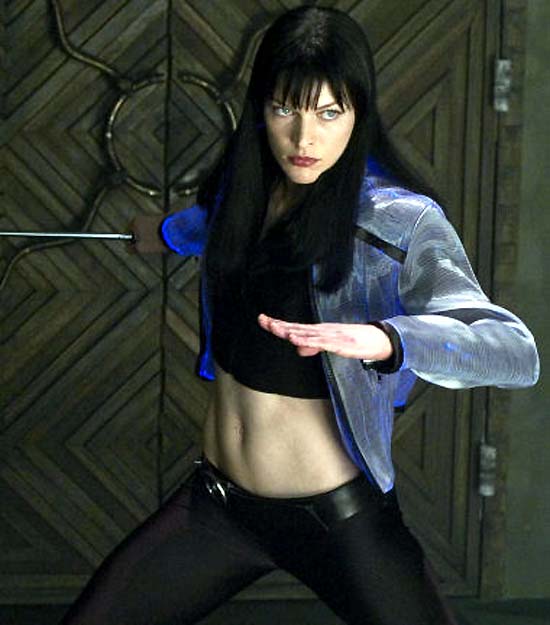
~~~UPDATE: REVIEW FOR ULTRAVIOLET POSTED~~~
Ultraviolet, starring Mila Jovovich, isn’t offering press showings to critics - this is never a good sign, as this usually indicates that the Studio expects bad ratings, and at least wants to capitalize on the opening weekend. Aeon Flux took this approach as well. Here’s my problem with that strategy - when the studio does this, they are pretty much DEMANDING that the critics give them bad reviews. Every critic is now UNDER PRESSURE to say the movie sucks.
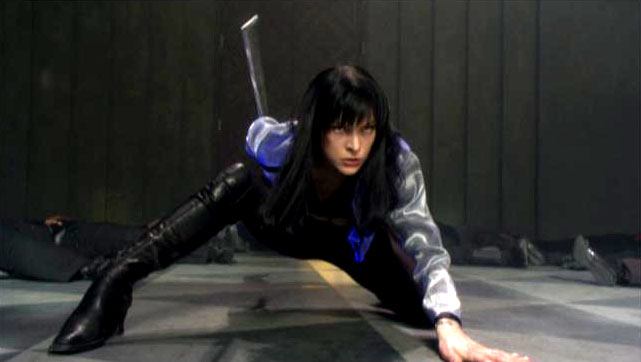
In any event, I’m still excited about Ultraviolet, and will remain hopefully till my review shows up on the third. I mean how bad could a cyberpunk-vamp flick be (he says innocently)?? I mean at some level this has to be like the wine joke, right? It can only get so bad, and even then, it should still be fun! 
BTW, Yahoo has some pretty nice trailers and slideshows for Ultraviolet.
This post has been filed under Upcoming Movies by SFAM.
Year: 2004
Directed by: Masahiko Maesawa
Written by: Chinfa Kang
IMDB Reference
Degree of Cyberpunk Visuals: Medium
Correlation to Cyberpunk Themes: Low
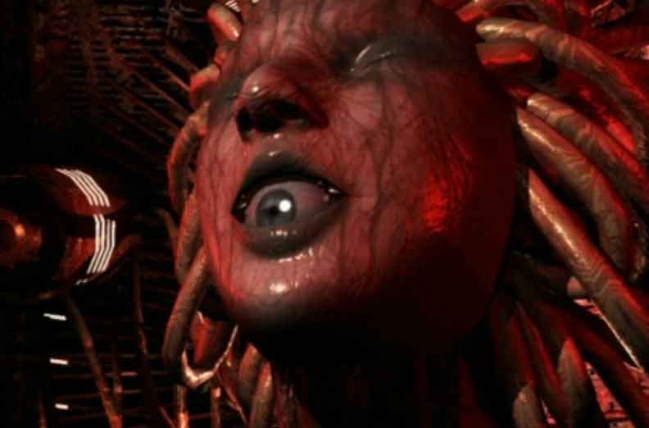
Overview: Galerians Rion is a a low-quality animation - meaning video game quality with a semi-coherent story. Unfortunately, the story too plays like a video game. The star of the video game is a boy named Rion, who wakes up in a bizarre dystopic version of his former world. It turns out that this crazed supercomputer named Dorothy is attempting to become a God and only Rion can stop her. To do so, he needs to find his sister Lilia, who, along with Rion, has been given a virus that combined, can destroy Dorothy. As most RPGs, Rion’s powers grow as he fights the Galerians that Dorothy throws up to block his journey to finding his sister. You can tell the end of the segment, because, um, Rion fights a boss character. Yes, you really are watching someone play a video game here!
The Bottom Line: While I am impressed that Maesawa was able to produce an anime on such a limited budget (I’m guessing a game environment was used to make most of the visuals other than Dorothy), they just aren’t good enough to make for compelling viewing. The visuals are rather fascinating in places - Dorothy (see above) is pretty cool for instance - and certainly are cyberpunk, as is the story, but there just isn’t enough here, either in story or visuals to make this worth recommending. I will give it a point for attempting to do a full scale anime without a budget.
~See movies similar to this one~
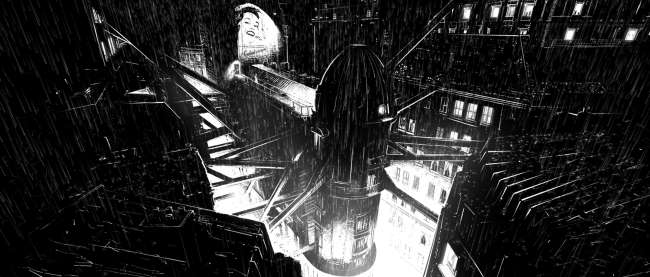
Dammit!!! I fucking hate encountering awesome looking movies that I can’t go see. In continuing the trend of having the majority of the good cyberpunk movies made outside the US, it looks like I’m going to have to lose out on seeing Renaissance 2054 for…um, God knows how long. This movie looks GREAT though. Here’s a few trailers:
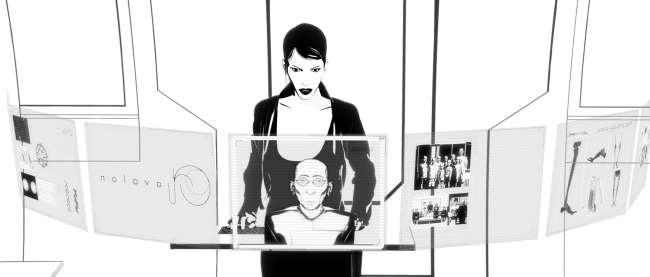
From a description on AWN:
“Renaissance is a futuristic animated thriller that’s filmed in motion capture, animated in 3D and rendered in flat black and white. In the year 2054 in Paris, police and the Avalon Corp. are trying to find a kidnapped researcher who holds knowledge that can transform the future of the human species altogether.”
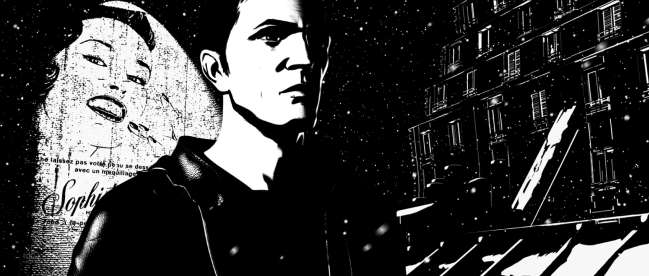
Anyone of you lucky Europeans who come here have an idea when this is coming to the states?
EDIT: I just found out that Renaissance 2054 is coming to the US this summer.
This post has been filed under Upcoming Movies by SFAM.
Year: 1999
Directed by: Andy & Larry Wachowski
Written by: Andy & Larry Wachowski
IMDB Reference
Degree of Cyberpunk Visuals: Very High
Correlation to Cyberpunk Themes: Very High
Key Cast Members:
Neo: Keanu Reeves
Trinity: Carrie-Anne Moss
Morpheus: Laurence Fishburne
Agent Smith: Hugo Weaving
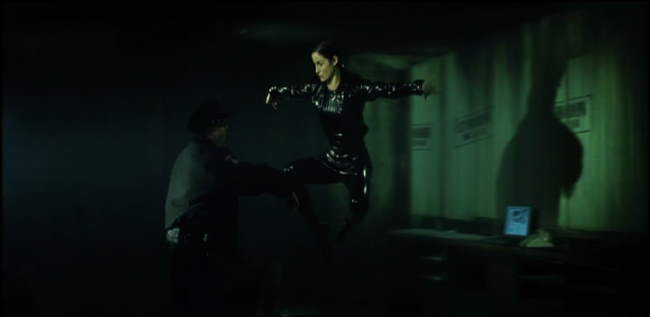
Definitely my favorite opening sequence of all time. Just a great great start to a movie!
Overview: The Matrix is one of my all-time favorite movies, so I’m just not going to attempt to come off as unbiased about it. Additionally, I’m guessing that pretty much everyone who’s coming to this site has seen it - probably numerous times, so I’m guessing a plot description isn’t of much value here. In short, my conundrum with the review is this - what should I say about this movie that will in any way add value to the reader? Answer: Not much. Instead I have decided to keep the bulk of my comments for various essays on the Matrix Trilogy.
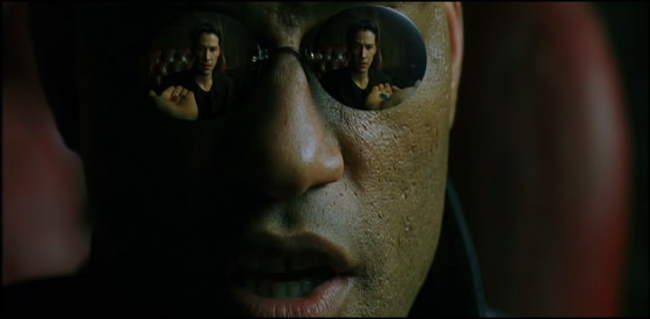
Matrix Influences: The Matrix influenced movies in general and society as a whole. With respect to movies, we see numerous influences, including:
- Special Effects: Bullet time and a myriad of other FX are now standard practice in movies and commercials
- Synonymous with “Cool”: Movies that have a “matrix-like” feel are advertised all the time. We know what this means - it means they aspire to be ultra-sleek, ultra-cool and the “in” thing.
- Fight Sequences: By hiring Hong Kong Martial Arts master Yuen Wo-Ping to coordinate the fights, the Matrix raised the bar on mainstream American movie fight sequences
- Matrix Source Code: The Matrix source code, taken in part from Ghost in the Shell, is everywhere now, and is instantly recognized, as is its meaning
- Hot Chicks in Black Shiny Stuff Kicking Butt: Trinity’s influence has massively upped the anty on action chicks in movies. While Michelle Pfeiffer’s Catwoman in Batman Returns re-initiated this trend, Carrie Anne Moss’ Trinity has made this outfit almost mandatory for female action heroines.
- The use of philosophy in movies: The Matrix seems to have broken the barrier to discussing philosphy in movies. Lets hope this idea lives on.
- Fashion: From Sunglasses, to overcoats to cyberpunkwear, the Matrix has changed the way people dress.

The Bottom Line: The Matrix is already one of the most influential in science fiction, and is truly one of the cornerstone cyberpunk movies in existence. We get it all here: terrific action, awesome cyberpunk concepts, incredible cyberpunk visuals, cool philosophical discussions, an absolutely awesome soundtrack (although DoomAng3l disagrees with this - see his comment below) and innovative FX. On top of this, all the leads were terrific. Reeves makes a perfect Neo, and Moss, Fishburne and Weaving give career-defining performances. Look below for move screencaps on page 2, and additional essays on the Matrix.
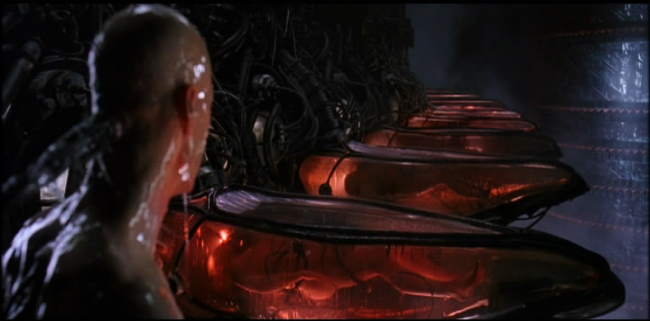
Matrix Essays
- The Matrix Trilogy: A Man-Machine Interface Perspective: This essay explores the Matrix Trilogy specifically from a scifi perspective - the purpose of which is to show how Neo’s journey is really a sequel to Motoko’s transformation at the end of Ghost in the Shell. Developed throughout the trilogy, Neo becomes a fully merged entity comprised of a sentient program with a human.
Page 2: More Screencaps–>>
~See movies similar to this one~
My primary goal here with cyberpunkreview.com is to create a knowledge asset for finding and understanding cyberpunk movies. Part of this involves actually providing decent reviews for ALL cyberpunk movies in existence (check out my thread in the Virtual Meatspace for my working list of all cyberpunk movies). The other aspect is creating relevant relationships between the movies so that their place in the genre can be understood. In pursuit of this, I have been tagging all my reviews in a number of different ways. I have broken down the various cyberpunk themes used, and have categorized the reviews through a number of ways. These lists are in the navigation frame to the right. Here’s what I’ve got so far:
Cyberpunk Themes
I also have the reviews grouped in a number of ways. In addition to the star rating and the decade the movie was released, I’ve identified a number of movie styles (animes, Japanese cyberpunk movies, etc.), and have created lists for movies with awesome visuals or terrific adherence to cyberpunk themes. So far, I have the following ones listed:
Cyberpunk Movie Reviews Grouped By
I haven’t made “link” pages for them up yet, but I have additional categories, such as “Made for TV,” “Internet shorts,” “Soft-core porn cyberpunk movies,” “Good low budget movies” and “Documentaries.”
Again, the idea here is to provide an easy way to find similarities between movies. My question - is this helpful? Do I have too many categories, or conversely, am I missing some?
This post has been filed under Site Development by SFAM.
I’m attempting to upgrade to Wordpress 2.o (2.01 actually). Apologies in advance for any downtime or formatting issues. With any luck, everything will look peacy in just a few!
EDIT: Well, looks like most things worked swimingly (let me know if anything is amiss), aside for the extra space that has now crept in to all my reviews. Between the title and the year on all the reviews, there is now an extra space - this is NOT intentional, nor did it exist prior to the upgrade. I’m working to figure out how to remove it (easier said than done, I’m afraid), and hopefully will do so soon, as it looks horrible!
This post has been filed under Site Development by SFAM.
Year: 1993
Directed by: Hiroshi Fukutomi
Written by: Yukito Kishiro (Manga), Akinori Endo
IMDB Reference
Degree of Cyberpunk Visuals: High
Correlation to Cyberpunk Themes: Very High
Key Cast Members:
Gally (Alita): Miki Itô
Ido: Kariya Shunsuke
Yugo: Kappei Yamaguchi
Chiren: Mami Koyama
Vector: Shigeru Chiba
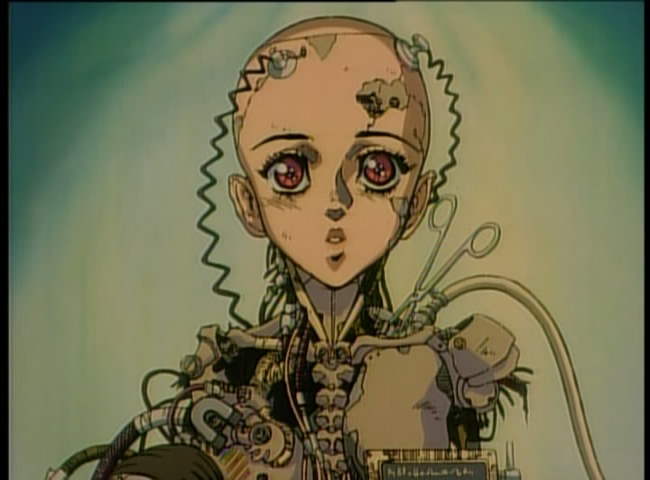
Overview: Battle Angel is based off a very well done Manga series called Battle Angel Alita. The movie covers the first two volumes of the Manga: Rusty Angel, which documents Alita’s “rebirth” and Tears of an Angel, which portrays a tragic love story. This anime from 1993 is one of the best man-machine interface animes out. The story is solid, and the drawing for that time period is terrific. While you might hear some gripe that the Manga is better, I think Fukutomi did a terrific job in taking Kishiro’s story to anime. I can only hope that James Cameron does a similarly wonderful job with the upcoming live action version of this. Just a warning - this is not a kids story - it contains lots of blood, head removals and minor amounts of nudity.
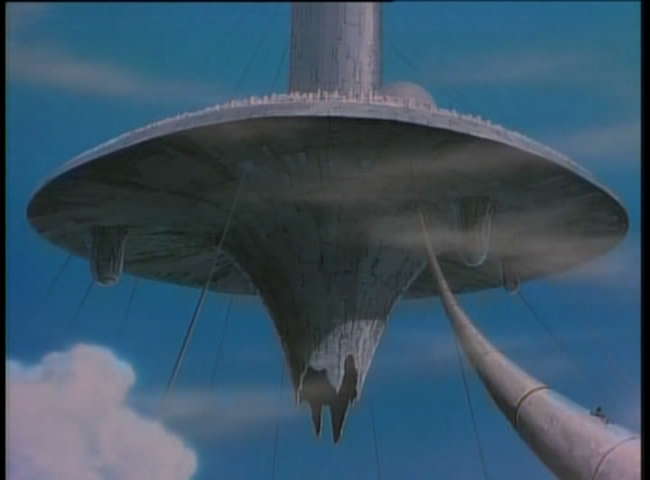
The Setting: Battle Angel takes place far into the future, after a societal collapse has occurred. Advanced human society has been relegated to a floating city called Zalem, that sits above a refuse heap called Scrap Iron City, which is inhabited by denizens living off the scraps and waste products Zalem expels. A corporation called the “Factory,” the primary employer for Scrap Iron City, sends products back up to Zalem through a series of huge metal tubes. Cyborg technology has become a way of life, with many “humans” having only their brain remaining from their original human body host. Scavenging and theft has become a way of life for many. Backbones are a particularly sought after commodity by thieves, who sometimes will violently take them from their living hosts. As social services no longer exist, the Factory posts “bounties” for the heads of the most egregious villians, which bounty hunters, called Hunter-Warriors pursue for money.
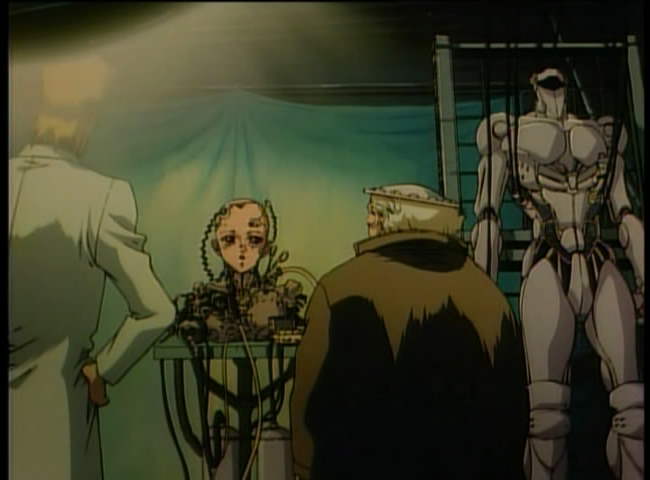
Rusty Angel: Daisuke Ido, an cyborg doctor extraordinaire, former citizen of Zalem, scavenges through the refuse heap to find spare cyborg parts to repair the citizens of Scrap Iron City. One day he comes across a female cyborg head that has a still-living human brain in it. He sets out to repair this head and gives her a wonderful body off of parts he has collected. He names her Gally (she is called Alita in the Manga), and she seems totally restored, except for the loss of memory from her earlier life. Ido becomes attached to Gally and they quickly develop a father-daughter type relationship.

Gally learns that Ido moonlights also a Hunter-Warrior both for moral reasons and to support his medical practice. Gally saves Ido from certain death, and thus, reveals that she, in her former life, was also a very talented warrior. Under protest from Ido, Gally asserts her individuality and desire to become a Hunter-Warrior like Ido, so that she too can have purpose to her life.
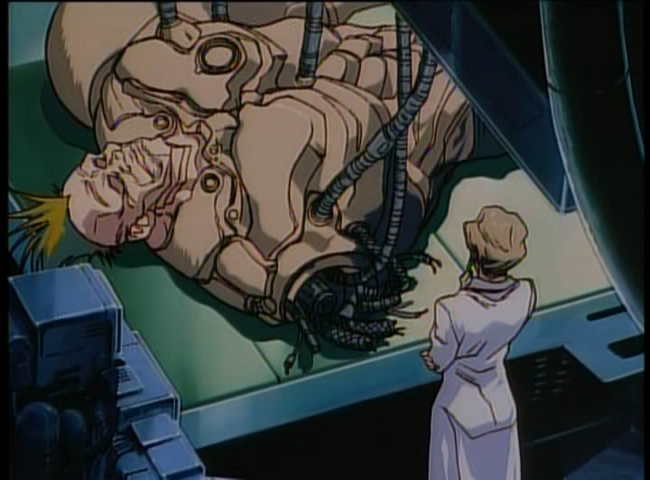
Chiren, also a cyborg doctor and Ido’s former partner, has also been ousted from Zalem, and is consumed with finding a way to return. Deciding that she will do anything to make this happen, Chiren hooks up with Vector, a shady character who has connections with the “Factory,” who agrees to eventually take her to Zalem in return for sexual favors and for her assistance in building a supra-cyborg gladiator named Greweicia for the fighting ring. This cyborg warrior also has a penchant for eating brains, and ends up on the bounty list. Chiren, wanting to be seen as superior to Ido, gets Greweicia to fight Gally in the hopes of destroying her, and thus, destroying Ido.
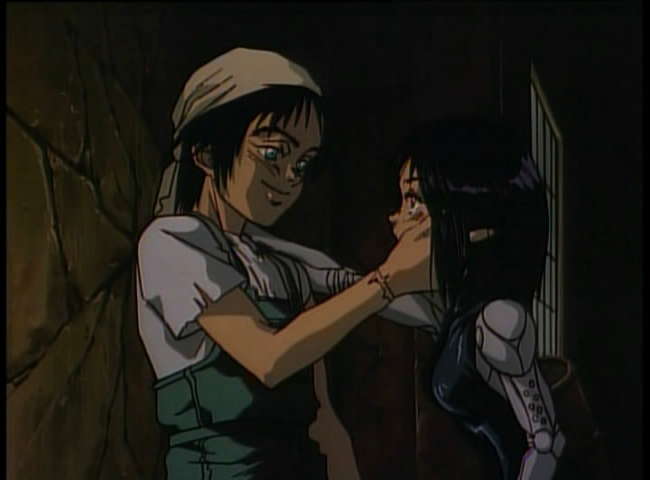
Tears of an Angel: Gally, in exploring the city has become infatuated with a hard working body named Yugo, who dreams of going to Zalem. Although it’s common knowledge that nobody born in Scrap Iron City can ever go to Zalem, Yogo is also consumed with finding a way, and has gotten an agreement from Vector, who promises Yugo if he can make 10,000,000 credits, than he will take Yugo to Zalem. Yugo has taken him up on his offer and has started stealing cyborg spinal cords as a way to augment his day job of fixing machinery. He is discovered, and is put on the Bounty list. Gally, who has fallen deeply in love with him, tries to rescue him from a rival bounty hunter. Unfortunately she is too late, but is able to save his head, and asks Ido to turn him into a cyborg. Even after becoming a cyborg, Yugo’s dreams of reaching Zalem cannot be abated, as he sees his life a struggle against the worthlessness that is the Scap Iron City.
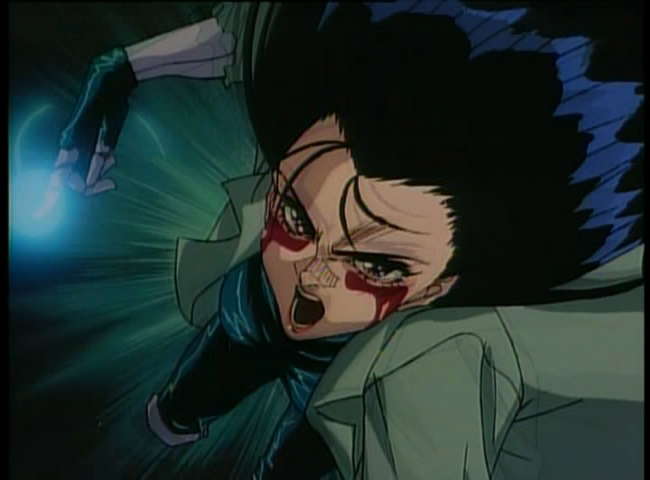
The Artwork: In Battle Angel, we see strong influences of Akira in most every aspect of the production. From the facial expressions to the darkly textured backgrounds to the fighting style approach, Battle Angel clearly has used Akira as a template for modern animation techniques. Like many OAVs of this time period, some of the backgrounds are bland while others are lavishly penned and inked with multi-layered designs. They “pick their battles” with the designs, but for the most part, the decisions are solid. The simple designs are in backgrounds such as the sky and in Ido’s house. The more complex ones are in the underground, Yugo’s hang out, and in the refuse heap scenes – this is where most of the action and plot take place.
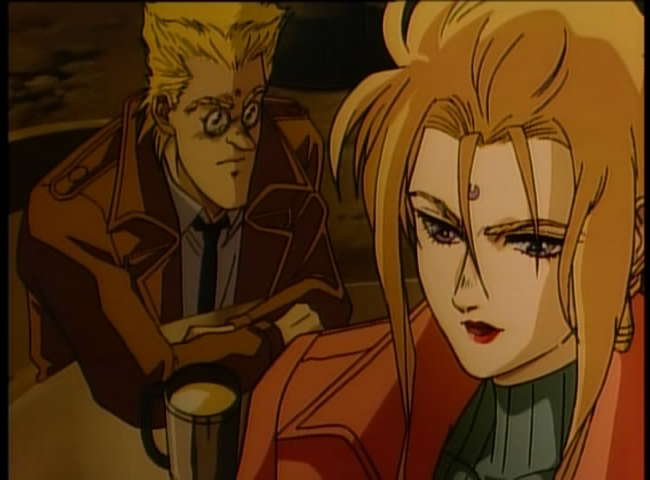
Changes from the Manga: While I think Battle Angel is a terrific anime, there are some changes from the Manga that some find annoying. Most bizarre is the renaming of Alita to Gally, and the city Tiphares to Zalem. However, unlike some, I don’t find the changes in the plot to be that problematic. The anime wonderfully captures the essence of the Manga. Perhaps the biggest change is the rationale for Alita’s powers. In the anime, we really don’t get an explanation, but in the Manga, Alita is first given a normal body by Ido, and ends up destroying it in her first fight. Realizing that Alita is a warrior at heart, Ido gives her the body he has saved for a long time – that of a berserker warrior. The primary villain in Rusty Angel is also different – he is a being who has grown up in the sewers, and after losing his body in fighting Alita, he takes over the Gladiator’s body. And Chiren, a central character in the anime is not in the first to novels of the Manga. Again, for the most part, I have no problems with the changes, and actually love the dimension that Chiren adds.
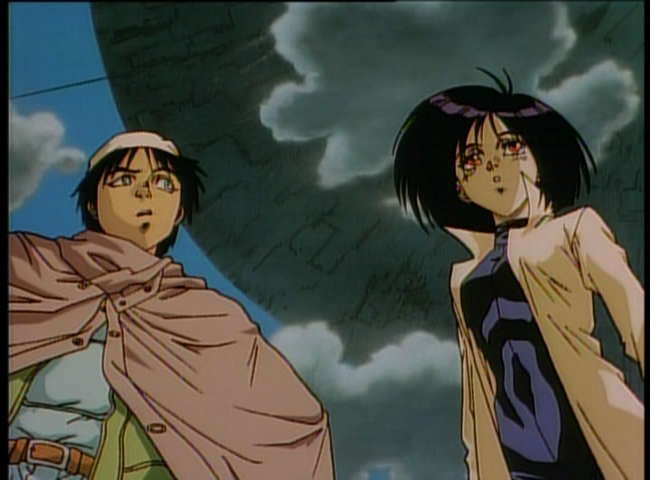
The Bottom Line: Battle Angel (Alita) just works for me as an anime. It is intelligent enough and well enough executed to get you to imagine a world where cyborgs are a reality. The world from the underground perspective is well done and Alita (I call her Alita, not Gally) as a character is terrific. Along with Armitage III and Ghost in the Shell (obviously), Alita is one of the best animes of this kind. Just a caution for those who have only seen the VHS, like most Japanese animes, Battle Angel comes off FAR FAR better with the Japanese dubbing cast than it does the English cast.
~See movies similar to this one~
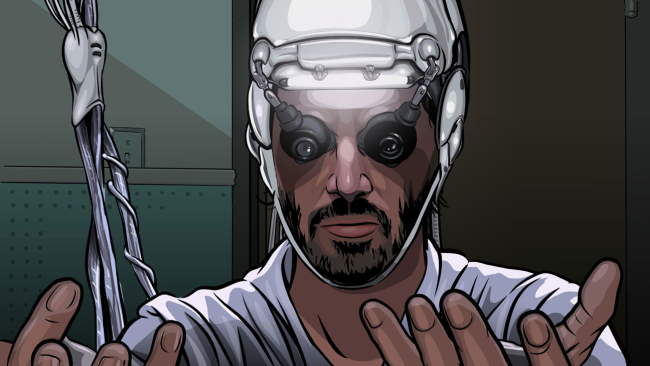
Wired has a pretty cool interview with Richard Linklater, director of Scanner Darkly, a new movie based on a Philip K. Dick novel. Linklater describes a number of the production issues, primarily centered around animation, that have delayed this picture from its original September 2005 target release date. The Rotoscoping technique they are using involves artists hand drawing a significant amount of the details, whereupon a software program fills in the rest. Apparently they had some significant issues in getting consistency out of the animation artists. Not surprisingly, additional problems arose out of usability issues with a highly customized software product.
Still, this movie looks interesting. Check out the trailer for Scanner Darkly if you haven’t seen it yet. I can’t wait for its July 7th release date!
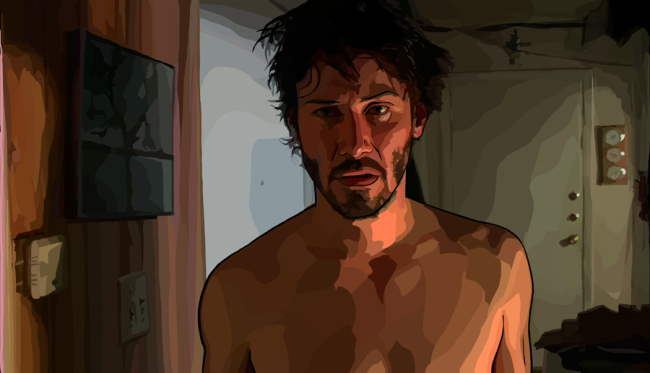
Also, Wired has a pretty fun top 10 list on why Keanu Reeves Rules for these kind of movies (like we didn’t already know that!).
This post has been filed under Upcoming Movies by SFAM.
Year: 1992
Directed by: Shinya Tsukamoto
Written by: Shinya Tsukamoto
IMDB Reference
Degree of Cyberpunk Visuals: High
Correlation to Cyberpunk Themes: Medium
Key Cast Members:
Taniguchi Tomoo: Tomorowo Taguchi

Overview: Unlike the tagline (should not be missed…), I think its quite OK to miss Tetsuo II, especially if you’ve already seen the real thing. In Tetsuo II, Tsukamoto substitutes a larger budget in lieu of the unique and innovative narrative we find in Tetsuo - the Iron Man. The compromise is bad all around. For starters, this style of merging man and machine works FAR better in B&W than it does in color. The surreal believability factor of the FX drops significantly in color. As for the story, the whole idea of centering the conflict around a family setting significantly lessens the power of his earlier story, as does Tsukamoto’s attempt to add a more coherent narrative. While his point still seems to be the same one, its told with lots less force, in a far less interesting way, and also in a far less shocking way.
The Bottom Line: I can take screencaps of this if anyone is dying to see the visuals (I understand it’s out of print), but it’s just not a great movie. Tetsuo: Bodyhammer is OK to see this as long as you understand you’re getting a Japanese Cyberpunk movies that’s far less than Tetsuo - Iron Man, or even less than Rubber’s Lover, for that matter. I’ve heard people comment that Bodyhammer sucks so they aren’t interested in seeing the first one - don’t buy this reasoning. While the first screams uniqueness, Body Hammer whimpers “cash in on my earlier success by cutting back the edginess and going more mainstream.” It even stars Tomorowo Taguchi again, who attempts to reprise the same role and crazed scream faces - only this time it comes across more as the last show in a long day of staged repeat performances, similar to what you might find in a theater act at an amusement park late on a Sunday evening. In that sense, Body Hammer comes off as a sequel in true hollywood style.
~See movies similar to this one~
Hi all,
Some jerk in Milton, Australia had fun last night with comments, sticking random letter comments for a number of the reviews. I’ve changed the comments back to moderated, unless the system already “knows” you. Although, I don’t know how persistent this is. If you’ve placed comments before and you see your name showing up in the comments block, you should be able to comment without moderation - otherwise this will be held for me to approve.
I don’t like doing this, as I think this stifles comments, but I’m torn based on the bizarre spam (I’m off to work now and don’t want to return to a myriad more of these). Hopefully this weekend I’ll look for a better way to do comments. Apologies for the switch. 
This post has been filed under Site Development by SFAM.
WordPress database error: [You have an error in your SQL syntax; check the manual that corresponds to your MySQL server version for the right syntax to use near '' at line 1]
SELECT COUNT(ID) FROM
|


![]()
























